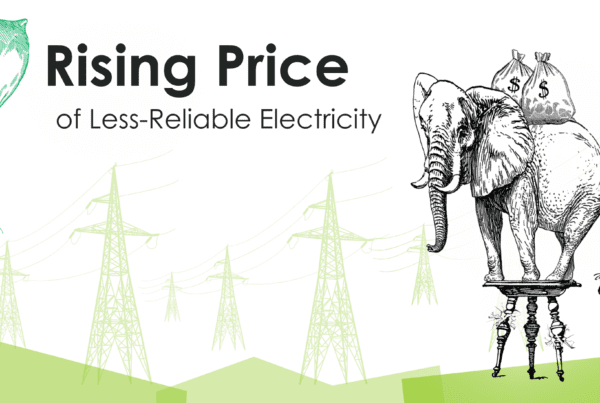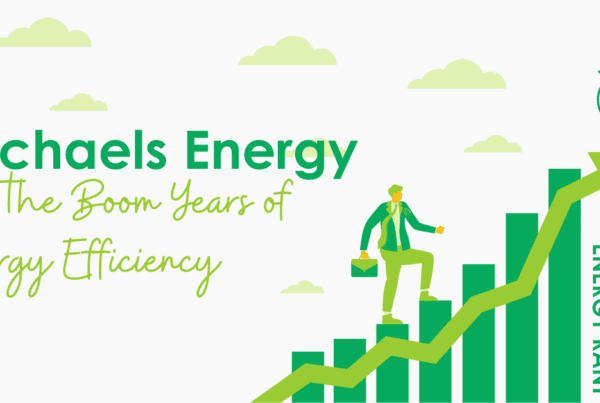
The source of this week’s post about the utility of the future is this Utility Dive article about Pacific Gas and Electric’s proposed incentives for electric vehicles.
The article made me think of this: liberals think big business is evil and conservatives think big government is evil. Both are right to a large extent. Oooh. In my opinion, libertarians are most correct fearing crony capitalism as the unholy alliance between big government and big business. A primary role of government is to ensure citizens are protected from fraud, embezzlement, collusion, and the seven deadly sins. Hens and little people are often left to fend for themselves when big B&G get together.
The utilities we have today, and for the past 100 years, have required a major public-private alliance. However, unlike Goldman Sachs, which can easily skim billions off the backs of US taxpayers as it plays middle man to issue $18 trillion of treasury debt and “quantitative easing” with no one noticing[1] (ever seen the movie Office Space?), utilities have a far, far more transparent business to run.
I think everyone agrees utilities have a multitude of challenges on their doorsteps:
- Distributed generation and a public that doesn’t understand the cost components for delivered energy
- Public support for renewable energy in concert with antipathy toward building infrastructure to transport it to load centers (cities)
- Coal plants shutting down by the dozen
- Federal regulation that always seems to end up before the United States Supreme Court – FERC Order 745, Clean Power Plan, Michigan v EPA – I.e., endless and unquantifiable uncertainty
- Getting stuck with the blame when the lights go out because of the above
- The inalienable right of energy prices that are barely a blip on the household budget
As they say, you’re either at the table or on the menu. I would introduce strategy beyond this: businesses can help plan the menu. This makes me queasy, but this is what PG&E, in the above referenced article, seems to be doing, but I do not blame them. Aggressive, or you might say “radical” goals require aggressive/radical ideas and policy.
An aside: I have experienced many times that people are sick and tired of hearing about California. “I don’t care what’s going on in California.” Well, I think these folks probably should care because California policies leak beyond its borders, and it is a large state with weight to throw around. For example, when Elan Musk finagles zero emission vehicle mandates for California through its policy makers, the entire auto industry, affecting the entire country, is impacted.
The Utility Dive article states the following.
As electric cars proliferate in California, the state’s utilities are embracing them as grid assets. When enough EVs are plugged into the grid, a power company can use them to balance electricity supply and demand without generation resources and smooth out peaks and troughs in renewable energy output.
That statement would be far more accurate if:
- Electric vehicles (EVs) were not used and instead were stationary batteries and
- If we had only conventional power supplies – e.g., fossil/nuclear sources
Conventional demand (not EV charging) peaks in summer during late afternoon, even when PV panels are pumping out the juice. This time of year, it peaks just after the end of the conventional workday. If electric vehicles could just remain stationary, they could lop off this early evening peak. Unfortunately, they need to drain the juice that may be supplied during mid-day to get home after work, when the sun sets. They need a lot of what’s left to get back to work the next day. What is left for peak shaving in between? Well, it could be drained to shave the peak and then recharged as needed overnight with conventional sources. I also get a vision of notes to bosses and spouses saying the utility emptied my battery; can we do that thing later?
This is pretty crazy when you stop and think about it. To tap this asset, the following are needed.
- PV panels
- Two charging stations for each vehicle – one for daytime charging and one for at home discharge and nighttime recharge (unless customers just park their $40,000 battery at home, permanently)
- Tens/hundreds of thousands of expensive vehicles
Probably half, or even less, of the EV’s power would come from renewable sources over the course of the year. In summertime, renewable energy would otherwise all be consumed by conventional loads. In winter and shoulder seasons, the peak could be shaved with EV’s in the garage during the early evening, with likely some recharging at night using conventional sources.
Why doesn’t somebody like McKinsey do a study comparing the cost of this hammer-to-fit PV/EV/storage option versus simply using compressed natural gas as a transportation fuel?
Lastly, politicians all claim to be the champion of the middle class, but reality is much closer to the opposite. Consider this EV/PV/storage scheme. I recently read that this sort of policy is reverse Robin Hood, or “robbin’ the hood”. I.e., the cost of infrastructure, charging stations, and car rebates gets built into rates or loaded onto another industry in this case – and people, not companies, pay for it. The proceeds go to subsidize well-to-do EV buyers and mega wealthy EV manufacturers like Elan Musk. Meanwhile, there is strong political pressure to offset increased cost for low income. Who’s left with 10 lbs in the 5 lb bag? The middle class.
[1] Just look at the resumes of US Treasury, Securities and Exchange Commission, Federal Reserve, et al, executives and see all the Goldman Sachs alums. I’m sure it’s all squeaky clean.





Great article! Much closer to reality than the wishful thinking articles perceiving EV’s as potential reducers of peak demand.